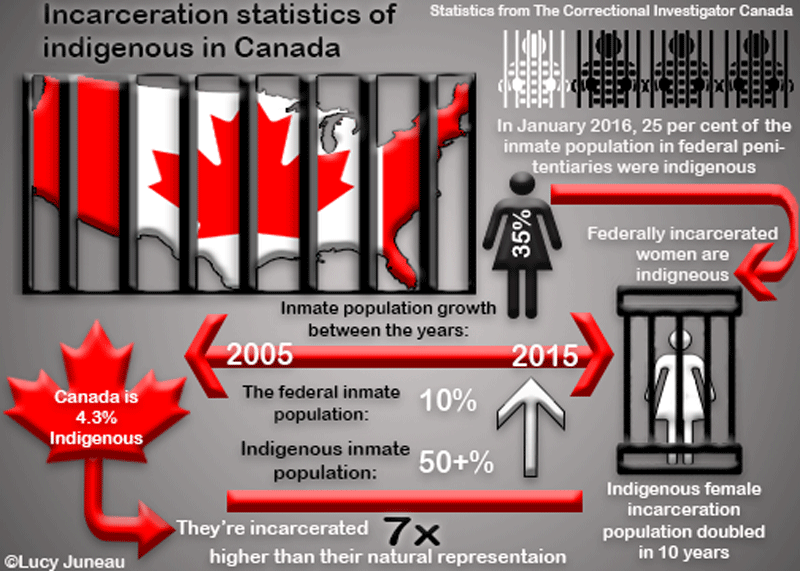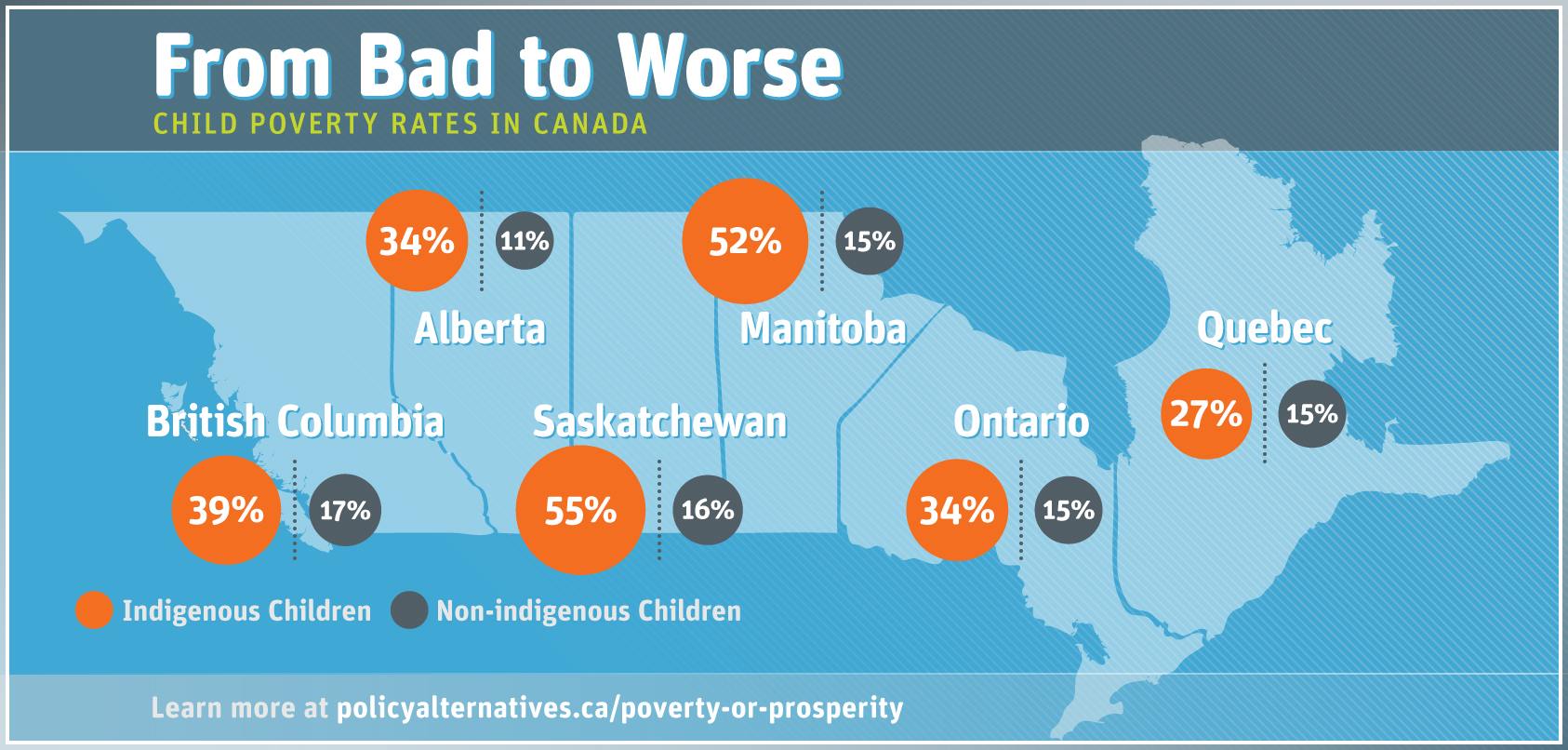Overrepresentation and Risk factors
Video File: https://www.youtube.com/watch?v=7d6qrv3nKds
 The link above is a video
of an indigenous person talking about their personal perspective on the justice
system and the overrepresentation of indigenous people in the justice system. The
individual discusses their personal experience in the justice system. The
individual came from a life of poverty. His caregivers used to steal food to
make sure their family could eat, and the speaker in the informative YouTube
video stole clothing at the age of 12 and that is when he had his first interaction
with the justice system.
The link above is a video
of an indigenous person talking about their personal perspective on the justice
system and the overrepresentation of indigenous people in the justice system. The
individual discusses their personal experience in the justice system. The
individual came from a life of poverty. His caregivers used to steal food to
make sure their family could eat, and the speaker in the informative YouTube
video stole clothing at the age of 12 and that is when he had his first interaction
with the justice system.
The goal of the video is
to open discussion on the social issue of indigenous overrepresentation in the
Canadian Criminal Justice System. Through the personal anecdote from the video
uncovers many risk factors, such as trauma from residential schools and
poverty. Risk factors will be later discussed and in more depth.
Overrepresentation has
been thought to be the product of systemic bias, trauma and poverty (Youth
Engagement, 2018, p. 1). Indigenous people are not only overrepresented as offenders,
but they are also overrepresented as victims (Department of Justice, 2017, para
1). In respect to offending, indigenous adults only make up 5% of the Canadian
population, but in corrections they account for 28% in provincial custodies and
27% in federal custodies (Malakieh, 2018, para 10), and indigenous women are
number one for being overrepresented in corrections (Department of Justice, 2017, para 6). Certain
provinces and territories experience the overrepresentation a greater rate (Malakieh,
2018, para 10).
Looking to statistics on victims, indigenous
people are two times more likely to be victimized than non-indigenous people
(Department of Justice, 2017, para 2). Indigenous
women are two times more likely to be victimized than indigenous males, and
they are three times more likely to be victimized than non-indigenous people
(Department of Justice, 2017, para 2). Though this article alludes to a video
that focuses on corrections, it will also investigate victims and the risk
factors associated with indigenous victimization.
With such a great
disposition in custodial rates it is appropriate to analyze the reasons as to
why there is such a mass difference. In respect to this issue it is important
to uncover the risk factors associated with incarceration rates in Canadian
corrections. The individual in the informative YouTube video discussed that he
came from a life of struggles and poverty. It has been found that communities
with more social programs and opportunities see a decrease in criminal activity
and low incarceration rates (Tubex, 2013, p. 4). Therefore, when analyzing
indigenous overrepresentation, one may think that poverty and lack of social
programs can be thought of as risk factors to future criminal behaviour.
It is also appropriate to
look at the historical context of the overrepresentation. Tubex, 2013, found in
a Canadian case study that colonialism and the trauma from that can be a
contribution to incarceration rates (p. 6).
Indigenous people went through traumatic events during colonialism and
the assimilation period in Canadian history, such as during the time of
residential schools. Therefore, residential schools and past trauma can be
thought of as additional risk factors.
 Also, social exclusion and
marginalization are additional risk facts and they can stem from systemic
discrimination and biases. The criminal justice system and laws can be applied
to indigenous people differently than non-indigenous people. In Tubex’s, 2013,
study they found that indigenous people are less likely to be granted bail and
experience more negative effects of police discretion (p. 9). Thus, from this
explanation one can see that indigenous people do not receive the same benefits
under the law and therefore may find themselves being more marginalized, which
has negative impacts and pose as offending risk factors.
Also, social exclusion and
marginalization are additional risk facts and they can stem from systemic
discrimination and biases. The criminal justice system and laws can be applied
to indigenous people differently than non-indigenous people. In Tubex’s, 2013,
study they found that indigenous people are less likely to be granted bail and
experience more negative effects of police discretion (p. 9). Thus, from this
explanation one can see that indigenous people do not receive the same benefits
under the law and therefore may find themselves being more marginalized, which
has negative impacts and pose as offending risk factors.
Transitioning from
incarceration rates and analyzing risk factors regarding indigenous people, one
must also look to victimization risk factors for a fuller picture on the
indigenous overrepresentation rates. Some of these risk factors are similar to offending risk factors. Poverty, substance abuse, young age, and family
demographics are examples of victimization risk factors (Department of Justice,
2017b, p. 20). All these risk factors have been analyzed and indigenous people
who possess them have been found to be more vulnerable to violent victimization
(Department of Justice, 2017b, p. 3). Gender/sex can also be thought of as a
risk factor. For instance, indigenous women are more likely to be victims of
sexual abuse, and they may find themselves more prone than non-indigenous women
to work in the sex trade, which is a dangerous profession (Department of
Justice, 2017b, p. 6).
References
Department
of Justice. (2017). Just facts. Retrieved November 15,2018, from https://www.justice.gc.ca/eng/rp-pr/jr/jf-pf/2017/jan02.html
Department
of Justice. (2017b). Victims of crime research digest no. 3. Retrieved November
15, 2018, from https://www.justice.gc.ca/eng/rp-pr/cj-jp/victim/rd3-rr3/p3.html
Google
Images. (n.d.). Affirming the rights of
indigenous people [Photograph]. Retrieved from https://www.google.ca/search?rlz=1C1CHWA_enCA648CA648&biw=1242&bih=597&tbm=isch&sa=1&ei=U33wW5f2FIO90wKXi7KgAQ&q=indigenous+lives+matter+canada&oq=indigenous+lives+matter+canada&gs_l=img.3..0i24.63468.69997..70117...0.0..0.102.1944.33j1......1....1..gws-wiz-img.......0j35i39j0i8i30j0i67j0i5i30j0i30.QcACJZLUgS8#imgrc=VLlM2lNLJ7JtmM:
Google
Images. (n.d.). Edmonton police checks
[Photograph]. Retrieved from https://www.google.ca/search?q=indigenous+racial+profiling&rlz=1C1CHWA_enCA648CA648&source=lnms&tbm=isch&sa=X&ved=0ahUKEwjb0c_1o9zeAhVjilQKHa2XDFAQ_AUIDygC&biw=1242&bih=597&dpr=1.1#imgrc=uu3xaWHWOgQRVM:
Google
Images. (n.d.). Indigenous poverty statistics
[Photograph]. Retrieved from https://www.google.ca/search?q=indigenous+poverty&rlz=1C1CHWA_enCA648CA648&source=lnms&tbm=isch&sa=X&ved=0ahUKEwiB1vyqpNzeAhWFj1QKHUmGCT4Q_AUIDigB&biw=1242&bih=597&dpr=1.1#imgrc=wYqM4RFJ_e-gzM:
Google
Images. (n.d.). Number of people in
Canadian prisons [Photograph]. Retrieved from https://www.google.ca/search?rlz=1C1CHWA_enCA648CA648&biw=1242&bih=597&tbm=isch&sa=1&ei=i3nwW-qpOoS28APboL24Dg&q=indigenous+overrepresentation+in+prison+canada&oq=indigenous+overrepresentation+in+prison+canada&gs_l=img.3...114420.117242..117465...0.0..0.64.529.10......1....1..gws-wiz-img.hyHFigQghvg#imgrc=HI44QxacXzRsZM:
Google
Images. (n.d.). Victimization of indigenous
people in Canada [Photograph]. Retrieved from https://www.google.ca/search?q=indigenous+victimization+rates&rlz=1C1CHWA_enCA648CA648&source=lnms&tbm=isch&sa=X&ved=0ahUKEwiz2oW_otzeAhULKXwKHYLkDQ8Q_AUIDygC&biw=1242&bih=597&dpr=1.1#imgrc=XC5-Wu9i5CAoNM:
Google
Images. (n.d.). Why are Canadian
indigenous overrepresented [Photograph]. Retrieved from https://www.google.ca/search?rlz=1C1CHWA_enCA648CA648&biw=1242&bih=597&tbm=isch&sa=1&ei=_3rwW6TdDYSBk-4P4JqSKA&q=indigenous+incarceration+canada&oq=indigenous+inca&gs_l=img.3.0.0l7j0i8i30j0i24l2.34471.38102..39360...0.0..1.223.1105.8j3j1......1....1..gws-wiz-img.......35i39j0i67.gHRSH0N7nT8#imgrc=S--NAKmn7POCuM:
Malakieh,
J. (2018). Adult and youth correctional statistics in Canada, 2016/2017. Statistics Canada. Retrieved November
15, 2018, from https://www150.statcan.gc.ca/n1/pub/85-002-x/2018001/article/54972-eng.htm
Tubex,
H. (2013). The revival of comparative criminology in a globalised world: Local
variances and indigenous over-representation. International journal for Crime, 2(3), 1-14. http://dx.doi.org/10.5204/ijcjsd.v2i3.110
Youth
Engagement. (2018). Research at a glance: Indigenous overrepresentation in the
criminal justice system (CJS). Retrieved November 15, 2018, from https://www.justice.gc.ca/eng/rp-pr/jr/rg-rco/2018/june03.pdf



Comments
Post a Comment